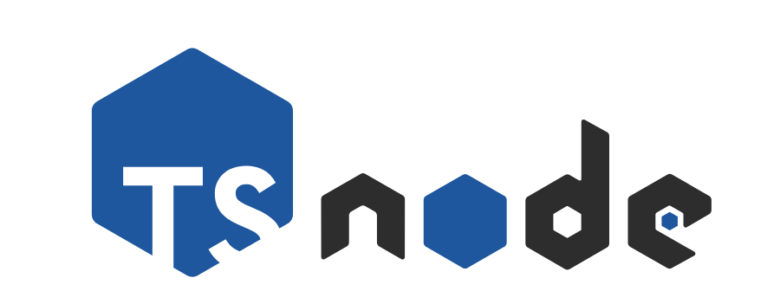In the ever-evolving world of web development, JavaScript has been the undisputed king for a long time. It powers the interactive and dynamic aspects of websites and applications. However, even with its flexibility and widespread use, JavaScript can sometimes lead to unexpected errors and maintenance challenges as projects grow in complexity. This is where TypeScript comes to the rescue, providing developers with a static type-checking layer on top of JavaScript. In this blog post, we will explore the key features of TypeScript and how it can solve these issues.
1. Static Typing
One of the biggest advantages of TypeScript is its support for static typing. Unlike JavaScript, where variables are dynamically typed, TypeScript allows developers to explicitly declare types for variables, functions, and even class members. This enables better code comprehension and catches many potential errors during the development phase itself. By catching these errors early, TypeScript helps reduce debugging time and ensures more reliable code.
2. Enhanced Tooling and IDE Support
TypeScript brings superior tooling and IDE support to the table. With static type information available, modern code editors like Visual Studio Code can provide intelligent auto-completion, error highlighting, and refactoring suggestions. The ability to navigate through the codebase and access detailed documentation becomes a breeze. This level of productivity enhancement is a game-changer for developers working on large-scale projects.
3. Better Collaboration and Maintainability
When multiple developers collaborate on a JavaScript project, it can become challenging to maintain a consistent codebase and avoid introducing subtle bugs. TypeScript adds a layer of rigor and clarity to the development process, making it easier to understand and maintain the code. With clear type annotations and interfaces, developers can clearly define API contracts, ensuring that different components of the system work seamlessly together.
4. ECMAScript Compatibility
TypeScript is a superset of JavaScript. This means that any valid JavaScript code is also valid TypeScript code. This compatibility allows gradual adoption of TypeScript in existing projects, without the need for a complete rewrite. TypeScript supports the latest ECMAScript standards, providing access to modern JavaScript features even for older browsers that may not have full ES6+ support.
5. Compile-time Error Detection
In JavaScript, errors usually reveal themselves at runtime, making it challenging to catch them during development. TypeScript, on the other hand, brings compile-time error detection to JavaScript development. While transpiring TypeScript code to JavaScript, the TypeScript compiler performs static type checking and flags potential errors. This early detection minimizes the chances of shipping code with bugs and improves the overall quality of the software.
Here is an example code of you can use typescript to build a simple server in nodejs returning hello to our blog
import express, { Request, Response } from “express”;
const app = express();
const port = 3000;
app.get(“/”, (req: Request, res: Response) => {
res.send(“hello share your knowledge!”);
});
app.listen(port, () => {
console.log(Server started at http://localhost:${port});
});
Let’s break down each line of code and see how TypeScript differs from JavaScript:
import express, { Request, Response } from "express";- This imports the
expressmodule and theRequestandResponsetypes from it. - In JavaScript, we would use the
require()function to import modules, and we wouldn’t be able to import types in the same way. - The advantage of using TypeScript here is that it provides type-checking for the
RequestandResponseobjects, which can help catch errors at compile-time.
- This imports the
const app = express();- This creates an instance of the
expressapplication. - This is the same in both TypeScript and JavaScript.
- This creates an instance of the
const port = 3000;- This sets the port number that the server will listen on.
- This is the same in both TypeScript and JavaScript.
app.get("/", (req: Request, res: Response) => {- This sets up a route for the root URL (“/”) that will respond to HTTP GET requests.
- The
reqandresparameters are of a typeRequestandResponse, respectively, which are imported from theexpressmodule. - The advantage of using TypeScript here is that it provides type checking for the
reqandresobjects, which can help catch errors at compile-time.
res.send("hello share your knowledge!");- This sends the response “hello share your knowledge!” to the client.
- This is the same in both TypeScript and JavaScript.
app.listen(port, () => {- This starts the server and listens for incoming requests on the specified port.
- This is the same in both TypeScript and JavaScript.
console.log(Server started at http://localhost:${port}`);`- This logs a message to the console indicating that the server has started and is listening on the specified port.
- This is the same in both TypeScript and JavaScript.
Now, let’s talk about the advantages of using TypeScript in this context:
- Type checking: TypeScript provides static type checking for the
RequestandResponseobjects, which can help catch errors at compile-time and reduce the risk of runtime errors. - Better IDE support: TypeScript provides better IDE support, including code completion, type checking, and documentation generation, which can make it easier to write and maintain code, especially for larger projects.
- Improved scalability: TypeScript can help improve the scalability of a project by making it easier to refactor code and add new features. This is because the static type checking can help ensure that changes to one part of the codebase don’t break other parts.
- Improved code quality: TypeScript can help improve the quality of code by catching errors earlier and providing better documentation. This can make it easier for developers to understand and maintain the code, and can also make it more accessible to other developers.
- Compatibility with JavaScript: TypeScript is a superset of JavaScript, which means that any valid JavaScript code is also valid TypeScript code. This makes it easy to gradually introduce TypeScript into an existing codebase, without having to rewrite everything from scratch.
Conclusion:
TypeScript is gaining popularity rapidly owing to its ability to address the pain points of JavaScript development. The static typing, enhanced tooling, better collaboration, ECMAScript compatibility, and compile-time error detection offered by TypeScript make it a compelling choice for any serious developer. Whether you are starting a new project from scratch or considering migrating an existing JavaScript codebase, TypeScript has the potential to supercharge your development process and raise the bar for code quality. Give it a try and experience the power of TypeScript in action
Both JavaScript and Typescript are wonderful programming languages for developing highly-functional websites. In 2016, the hottest trend in web app development is the use of these coding languages for creating robust, dynamic web pages. To thrive in this environment, you need to have knowledge of both programming languages. As a designer, this should be your primary focus: acquiring expertise with these two extremely popular code language variants. You will not only develop a unique skill set that will catch the attention of potential employers or clients, but also increase your versatility as a web developer overall. While there are certainly high opportunities and demand for designers who primarily work with one or the other (JavaScript or Typescript), designers who can manipulate and iterate upon both have unique trajectories ahead of them.




Comments
Phenomenal 🌟